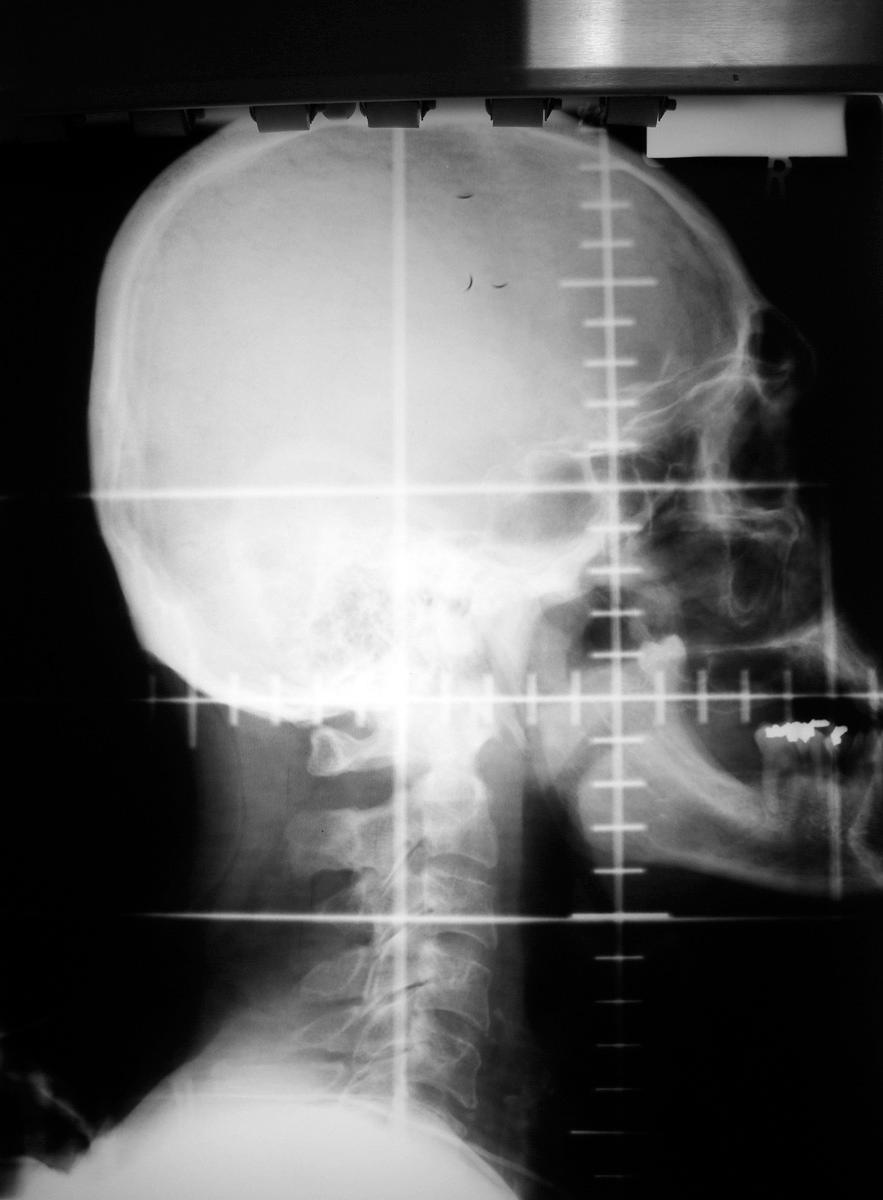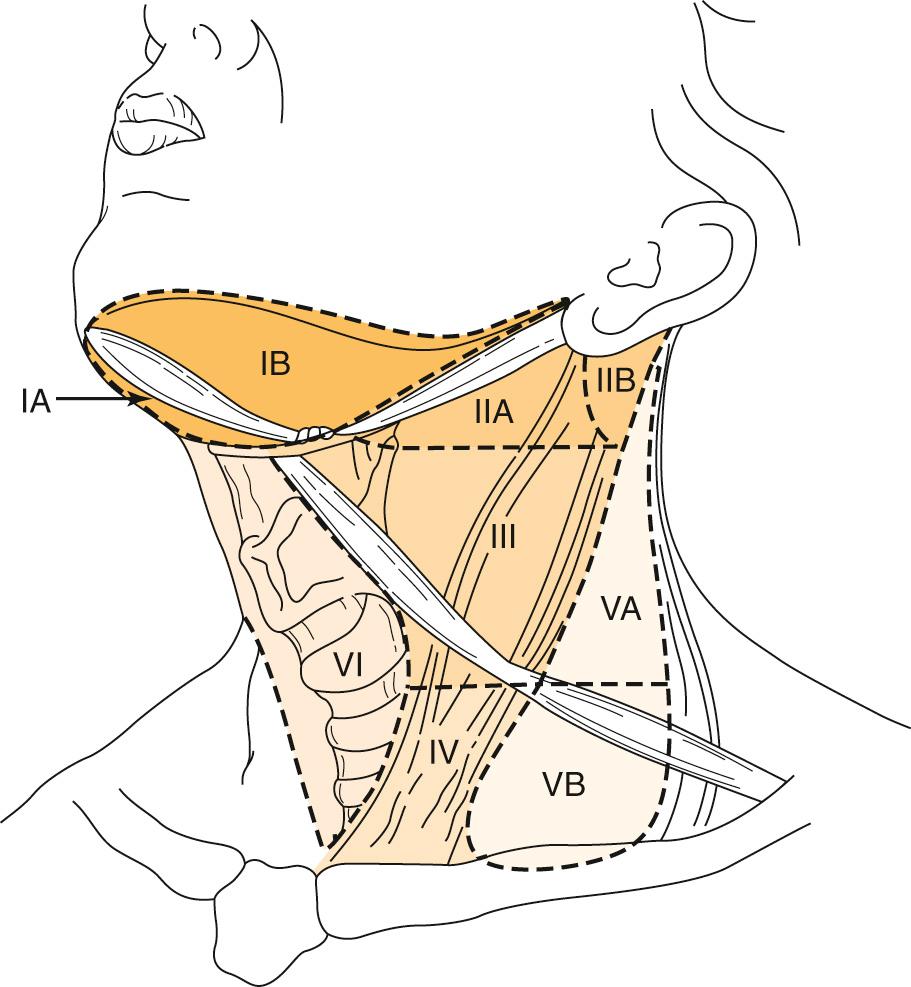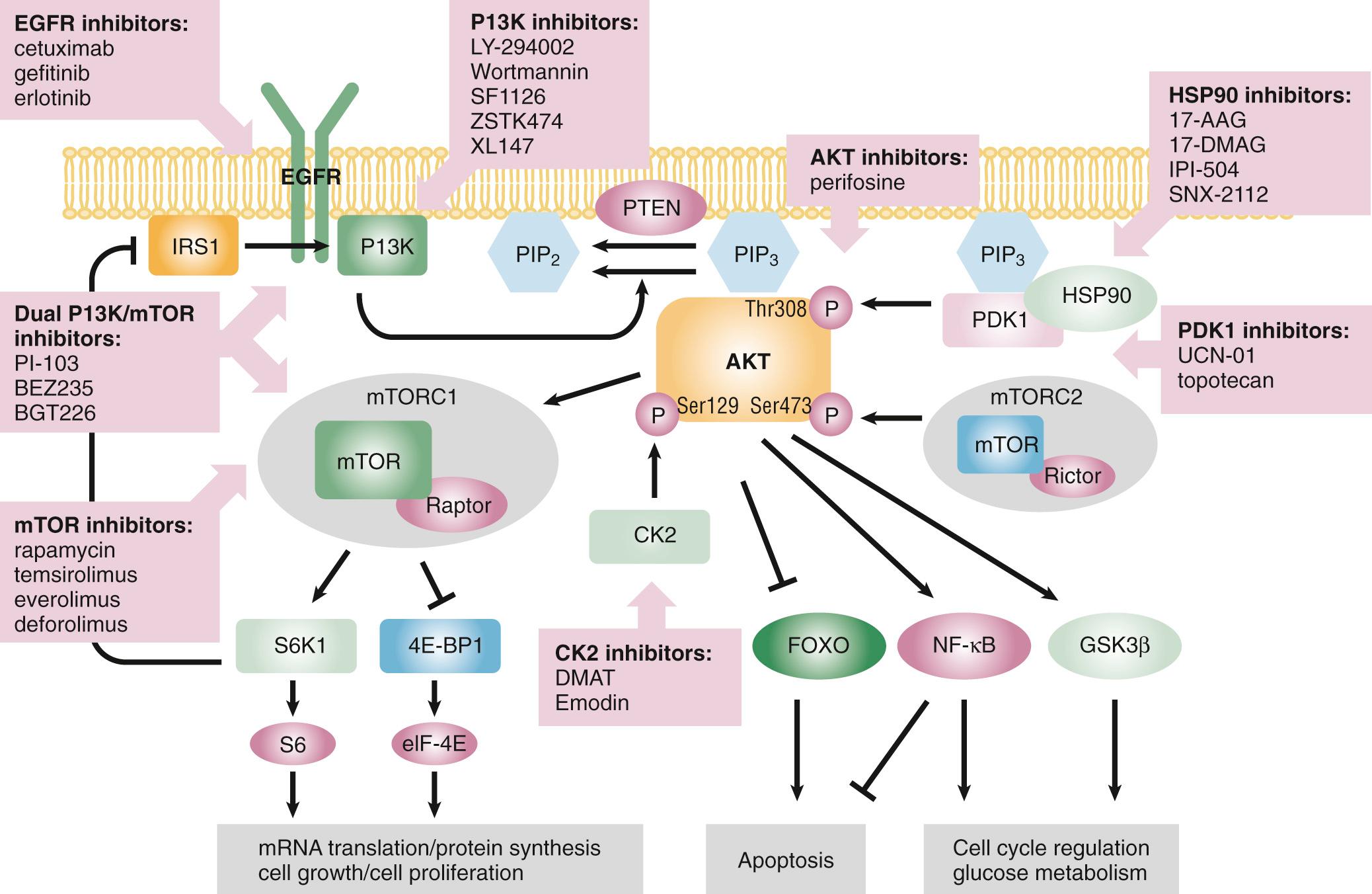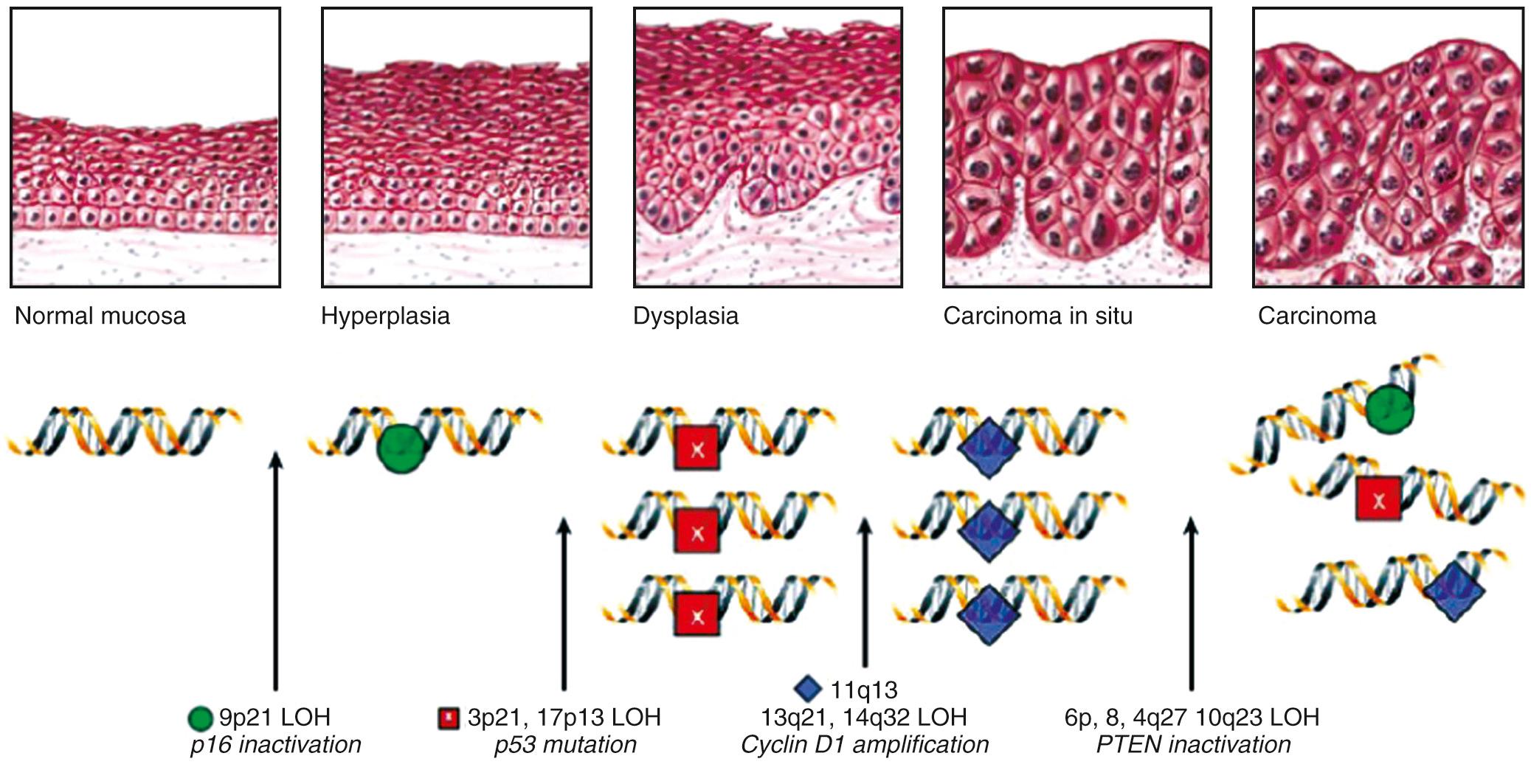Physical Address
304 North Cardinal St.
Dorchester Center, MA 02124
LARYNGEAL CANCER THERAPY
Early-Stage Glottic Cancer and Supraglottic Cancer (T1-T2 Lesions)
Treatment options include either radiation therapy (RT) or surgery (e.g., “stripping,” laser excision for glottic cancers). Definitive RT offers several advantages over a primary surgical option, such as superior quality of voice outcome and obviating the need for a neck dissection.
Radiotherapy dose/fractionation schemes are as follows for T1 and T2 lesions:
For Tis/T1 lesions = 6300 cGy at either 210 cGy/fraction (fx) or 225 cGy/fx, or 6600 cGy at 200 cGy/fx
For T2 nonbulky lesions = 6525 cGy at 225 cGy/fx, 7000 cGy at 200 cGy/fx, or 7920 cGy at 120 cGy/fx bid, and for T2 bulky lesions ≥7000 to 7400 cGy at 200 cGy/fx
Radiotherapy local control (LC) rates are as follows:
Tis lesions ≅ 90% to 98% (see Table 110.1 )
T1 lesions ≅ 80% to 95% (see Table 110.2 )
T2 lesions ≅ 65% to 90% (see Table 110.3 )
Advanced-Stage Glottic Cancer (T3-T4 Lesions, N+)
A primary surgical treatment is recommended for large bulky tumors in which concurrent chemoradiation therapy is unlikely to achieve LC of disease, or for those patients with a poor presenting quality of voice such that voice preservation is futile, or with a destroyed epiglottis, resulting in an irreversibly compromised swallowing function with a high probability of aspiration.
Local tumor control rates ≅70% to 88% with postoperative RT ± chemotherapy (also see Table 110.4 ).
Overall survival ≅50% to 60% with postoperative RT ± chemotherapy (also see Table 110.4 ).
Definitive concurrent chemoradiation therapy is recommended for preservation of the larynx only in those patients who present with nonbulky tumors and with a voice and swallowing function that is still good enough to preserve.
Local tumor control rates ≅70% (also see Table 110.5 ).
Overall survival ≅50% to 60% (also see Table 110.5 ).
Supraglottic Cancer
Treatment principles for early- and advanced-stage supraglottic cancers are the same as for glottic cancers, except that lymphatic nodal stations should be included in the radiation volume even for early-stage disease.
Early-stage supraglottic cancer (T1-T2 lesions)
Radiotherapy dose/fractionation schemes are as follows for T1 and T2 lesions:
T1 lesions = 7000 cGy at 200 cGy/fx
T2 lesions = 7000 to 7400 cGy at 200 cGy/fx, or 7440 to 7680 cGy at 120 cGy/fx bid (≥6 hours apart)
Radiotherapy LC rates are as follows:
T1 lesions ≈90% to 100% (see Table 110.7 )
T2 lesions ≈70% to 90% (see Table 110.7 )
Advanced-stage supraglottic cancer (T3-T4, N+ lesions)
Radiotherapy dose/fractionation schemes are as follows for T3 and T4 lesions:
T3-T4 lesions ≥ 7000 cGy to 7400 cGy at 200 cGy/fx
Surgery with postoperative RT ± chemotherapy local tumor control rates ≅70% to 88%, with an overall survival ≅50% to 60%
Definitive concurrent chemoradiation therapy local tumor control rates ≅70%, with an overall survival ≅50% to 60%
Subglottic Cancer
Subglottic cancers are extremely rare. Early-stage lesions can be definitively treated with radiotherapy alone (66 to 70 Gy at 2.0 Gy/fx), whereas advanced-stage tumors should be treated with surgery followed by radiation therapy with or without chemotherapy.
HYPOPHARYNGEAL CANCER THERAPY
Treatment principles for early-stage lesions are the same as for glottic cancers, except that lymphatic nodal stations should be included in the radiation volume.
Early-Stage Hypopharyngeal Cancer (T1-T2 Lesions)
Radiotherapy dose / fractionation schemes are as follows for T1 and T2 lesions:
T1 lesions = 7000 cGy at 200 cGy/fx
T2 lesions = 7000 to 7400 cGy at 200 cGy/fx, or 7440 to 7680 cGy at 120 cGy/fx bid (≥6 hours apart)
Initial radiotherapy LC rates are as follows (see Table 110.8 ):
T1 lesions ≈75% to 90%
T2 lesions ≈60% to 80%
Advanced-Stage Hypopharyngeal Cancer (T3-T4, N+):
Treatment principles involving surgical and organ-preservation approaches are similar to advanced-stage glottic cancer
Low-volume, nonbulky disease should be managed with definitive chemoradiation therapy to avoid sacrificing the larynx associated with a primary surgical approach.
Bulky disease should be managed with a primary surgical approach followed by postoperative radiotherapy ± chemotherapy
LC (5 years) ≈60% to 70%, and overall survival (5 years) ≈25% to 35%.
The annual incidence of laryngeal cancers is approximately 13,000 cases per year, which represents about one-fifth of all head and neck malignant neoplasms diagnosed in the United States annually. Major etiologic factors associated with the development of laryngeal and hypopharyngeal carcinomas include tobacco smoking and alcohol abuse.
All patients should undergo a staging evaluation prior to initiation of therapy, which includes a history and a head and neck examination consisting of a laryngoscopy, computed tomography (CT), and/or magnetic resonance imaging (MRI) of the head/neck region.
Early-stage disease can be treated with either radiation therapy (RT) or surgery. For T1 lesions, local control (LC) rates typically vary from 85% to 95%. For T2 lesions, LC rates typically vary from 65% to 90%.
In appropriate patients with T3 disease, laryngeal preservation with concurrent chemoradiation therapy should be considered as a viable treatment option as compared to laryngectomy. LC rates typically vary from 70% with a 5-year overall survival (OS) range of 50% to 60%.
In patients with resectable T4a disease, laryngectomy followed by adjuvant RT with or without chemotherapy should be considered as the primary treatment option. LC rates typically vary from 70% to 88% with a 5-year OS range of 50% to 60%.
The larynx is central to the uniquely advanced human ability to communicate. Besides directly producing the voice, the larynx is indirectly involved in other critical functions such as swallowing. It follows that larynx cancer is a potentially devastating diagnosis for a patient because it threatens both survival and quality of life. The American Cancer Society reported 12,410 cases of laryngeal cancer in 2019, with 3760 deaths resulting from this disease. Cancer of the hypopharynx is uncommon with approximately 2500 new cases predicted.
Treatment of the larynx and hypopharynx should achieve two major goals: cure of the cancer and whenever possible, preservation of organ function to maintain a high quality of life. For instance, an aggressive surgical approach that would leave the patient with gross deformities and functional impairment is not optimal; on the other hand, advocating “organ-preserving” chemoradiation therapy for a patient with a nonfunctional larynx is also counterproductive. Cure is likely in early-stage larynx and hypopharynx cancers, but the prognosis is poor for patients with advanced-stage disease, with 5-year overall survival (OS) usually ranging from 50% to 60%, although it is even worse for patients with hypopharyngeal cancers (20% to 35%). Unlike other sites in the head and neck, recent survival outcomes in larynx cancer have slightly declined. Possible explanations, including increased use of organ-preservation therapy such as definitive chemoradiation, have been the subject of recent controversy. To optimize patient care and outcomes, the involvement and coordination of a multidisciplinary team including ear, nose, and throat surgeons, radiation oncologists, medical oncologists, and appropriate supportive staff (i.e., nurses, dieticians, social workers, speech and swallowing therapists) is absolutely necessary.
To determine optimal therapy for an individual patient, careful attention should be paid to patient-related factors such as their baseline quality of voice and swallowing function, weight loss, comorbidities, smoking status, duration of symptoms, age, performance status, hemoglobin (Hgb) levels, renal function, preexisting neuropathy or hearing loss, family support system, and the patient's motivation to complete the proposed treatment. Important tumor-related factors include the volume and extent of disease, nodal disease, and tumor grade. Treatment-related factors to incorporate into the selection of therapeutic management include the likelihood of acute/chronic toxicities of the therapy and its impact on the quality of life, and duration of treatment. A holistic patient-centered approach that takes into account these factors is necessary for the optimal individualized selection of each patient's cancer treatment.
In order to achieve succinctness and clarity, this chapter is organized as follows:
Review of pertinent anatomy
Key points in initial evaluation and workup of patients
Overview of treatment options and radiation techniques
Innovations and future direction in treatment
A fundamental knowledge of laryngeal and hypopharyngeal anatomy is necessary to allow the clinician to understand how (1) a particular cancer affects function to produce signs and symptoms; (2) patterns of local invasion and lymphatic and distant metastases differ for individual cancers of the larynx and hypopharynx; and (3) the extent of tumor within the larynx and hypopharynx determines treatment selection. For the radiation oncologist, anatomy is critical for identifying sites at risk for microscopic disease coverage and for optimal sparing of critical structures.
The hypopharynx extends from the superior aspect of the hyoid bone, which corresponds to the level of the vallecular floor, to the inferior border of the cricoid cartilage. The three subsites of the hypopharynx are (1) the paired pyriform sinuses, (2) the postcricoid area, and (3) the posterior and lateral hypopharyngeal walls.
The larynx is intimately related to the hypopharynx; it is situated anteriorly to the hypopharynx, at approximately the same cervical levels. Anatomically, the larynx extends from the tip of the epiglottis at the level of the lower border of the C3 vertebra to the distal extent of the cricoid cartilage at the level of the C6 vertebra. The larynx is subdivided into three anatomic regions: the supraglottis, the glottis, and subglottis regions. The supraglottic larynx begins superiorly at the suprahyoid epiglottis and inferiorly to where the mucosa of the upper surface of the true vocal cords forms the lateral wall of the ventricle. It includes (1) the suprahyoid and infrahyoid epiglottis, (2) the aryepiglottic folds, (3) the arytenoids, (4) the false vocal cords, and (5) the ventricle. The glottis consists of the true vocal cords and the anterior and posterior commissures. The anterior commissure may approach within 1 cm of the skin surface, an important consideration for radiation treatment planning. The lower boundary of the glottis extends 5 mm below the free margin of the vocal cords, or to the horizontal plane 1 cm below the apex of the ventricle. The vocal cords attach to the thyroid cartilage at what is visualized to be the “figure-of-eight” on a lateral plain film. The subglottis extends from the lower boundary of the glottis to the inferior margin of the cricoid cartilage. These anatomic boundaries are readily visualized on plain lateral x-ray films ( Fig. 110.1 ).

From a radiographic perspective, it is important to note that the thyroid, cricoid, and most of the arytenoid cartilages are composed of hyaline cartilage, which begins to ossify when a person is about 20 years old. The epiglottis, corniculate and cuneiform cartilages, and the apex and vocal process of the arytenoids are made up of elastic cartilage, which does not ossify and therefore is not radiopaque.
Knowledge of the lymph node levels in the neck in relation to bony landmarks, as well as surgical landmarks, is important for the radiation oncologist when planning radiation fields. Level I nodes are above the hyoid bone, below the mylohyoid muscle, and anterior to the back portion of the submandibular gland ( Fig. 110.2 ). This corresponds to the submental and submandibular triangles. Level II nodes are located from the skull base to the lower body of the hyoid bone inferiorly, posterior to the back of the submandibular gland, and anterior to the posterior extent of the sternocleidomastoid muscle. The jugular chain lymph nodes, which run from the mandible down to the carotid bifurcation, are included in this level. Level III nodes extend from the lower body of the hyoid to the inferior margin of the cricoid, also anterior to the posterior margin of the sternocleidomastoid muscle, corresponding to the region from the carotid bifurcation to the omohyoid muscle. Level IV lymph nodes are bordered superiorly by the lower border of the cricoid cartilage and inferiorly run to 2 cm superior to the sternoclavicular joint and are anterior to the posterior margin of the sternocleidomastoid muscle, which corresponds to the region from the omohyoid muscle to the clavicle. Level V lymph nodes run from the skull base to the level of the clavicle in the region posterior to the sternocleidomastoid muscle; this area is the posterior triangle bounded by the sternocleidomastoid (SCM) anteriorly, the trapezius posteriorly, and the omohyoid inferiorly. Level VI lymph nodes are between the lower body of the hyoid bone and the suprasternal notch, otherwise known as the anterior compartment between the carotid arteries (see Fig. 110.2 ). The NRG contouring atlas for the N0 neck is a widely used reference available at www.nrgoncology.org .

The glottis has a very sparse lymphatic supply and hence, glottic carcinomas typically present with a very low rate of lymphadenopathy. For a “true” T1 lesion, there should be virtually no lymphadenopathy at diagnosis; for T2 lesions, the incidence of lymphadenopathy is typically 2% to 7%, and approximately 20% for T3 and T4 lesions. Typically, the involved lymphatic nodal stations by glottic cancers include the midjugular (level III) and upper jugular nodes (level IIA).
Unlike glottic cancers, supraglottic cancers typically present with lymph nodal metastases at diagnosis, even in early-stage disease. Thus the incidence of lymphadenopathy is 55% at diagnosis with a bilateral rate of approximately 15%. Supraglottic cancers typically drain to nodes along the jugulodigastric chain to mostly upper (level II) and midjugular (level III) lymph nodes.
Given the rarity of subglottic cancers, data regarding their incidence of lymphadenopathy are sparse. The incidence of lymphadenopathy is quite uncommon in early-stage T1-T2 subglottic cancers. In advanced-stage T3-T4 subglottic cancers, the incidence of lymphadenopathy varies from 10% to 50%.
HPV infection has caused an increase in the incidence of oropharyngeal cancer and is associated with a favorable prognosis. The overall presence of HPV in cancerous lesions of the larynx varies between 3% and 85% with an average of approximately 25% depending on the procedure applied for sample collection and viral DNA detection methodology. The differences depend on primers used for the reaction, genomic localization and the length of the product amplified by PCR, conditions of the reaction, and false-positive results obtained due to the sample contamination with viral particles. Kreimer et al. studied 5046 cases of head and neck cancers from all over the world, 1435 of which were laryngeal cancers tested for the presence of HPV with the use of PCR detection. In 35 publications related to the cancer of larynx, HPV infectivity was found in 24% of cases. In this study, Kreimer et al. paid particular attention to the geographical location of the conducted studies and they confirmed that the prevalence of HPV occurrence in cases of head and neck cancers depends on the region of the world inhabited by the patients. The HPV prevalence in cases of laryngeal infection was the highest in Asia and accounted for 38.2% of squamous cell cancers. Another recent systematic review of the literature found HPV infection in approximately 20% of laryngeal cancer cases but no clear association with treatment outcome.
Epithelial growth factor receptor (EGFR) is a receptor tyrosine kinase frequently overexpressed in HNSCC and it is associated with a worse prognosis. Targeting of the EGFR pathway has proven successful with the monoclonal antibody cetuximab, but use of small-molecule receptor tyrosine kinase inhibitors has been less successful. The EGFR pathway and associated downstream pathways PI3k-AKT-mTOR as well as potential drugs targeting these pathways are represented in the following text ( Figs. 110.3 and 110.4 ).


These pathways involve many potential prognostic markers including AKT, Bcl-xl, NFκB, BAK, p53, Rb, MMP, VEGF, PTEN, cyclin D1, and COX-2.
The symptomology associated with supraglottic cancers often depends on the site of involvement. Typically, the most common presenting symptoms of supraglottic cancers are sore throat and odynophagia. However, patients with epiglottic tumors can often present with a “hot potato” voice, whereas patients with false vocal cord cancers can present with hoarseness. Patients can also present with throat pain, referred otalgia, and sometimes dysphagia. A neck mass may be the first sign of carcinoma of the supraglottis because of the high incidence of lymph nodal metastases. Unilateral otalgia occurs because of referred pain from the involvement of the vagus nerve and the auricular nerve of Arnold (a branch of the vagus nerve). Hoarseness is usually not an initial symptom, and it occurs with invasion of the vocal cords. Weight loss, dyspnea, foul breath, air obstruction, and aspiration occur with advanced disease.
The most typical presenting symptom of early-stage vocal cord cancer is hoarseness. The symptoms of advanced disease include sore throat, localized pain as a result of cartilage invasion, otalgia, and dyspnea as a result of airway compromise.
Carcinoma of the subglottis is relatively asymptomatic during early stages. With advanced-stage disease, dyspnea becomes the predominant symptom as a result of narrowing of the airway; other less common symptoms include hoarseness, odynophagia, and hemoptysis.
Secondary to anatomic location, patients with hypopharyngeal cancers often present at more advanced stages than other head and neck cancers. Typical presenting symptoms include hoarseness, odynophagia and/or dysphagia, a sore throat, otalgia, weight loss, and neck masses. In more advanced stages, patients may also complain of hemoptysis and stridor as the airway becomes compromised.
The diagnostic evaluation of a patient who is suspected of having cancer of the larynx or hypopharynx should begin with a mandatory history and physical examination. The mainstay of the physical examination is the flexible fiberoptic endoscopy, which allows for excellent visualization of the infrahyoid epiglottis and anterior commissure; these regions may be difficult to see with a mirror examination ( Box 110.1 ). Several clinical pearls should be remembered when performing the examination. In addition to determining the tumor extent, assessment of the mobility of the vocal cords is critical because this affects staging and prognosis. For lesions in the supraglottis, careful examination of the base of the tongue should be performed to determine its involvement. Because hypopharyngeal carcinomas can often present as skip lesions with disease distant from the primary site, a thorough examination is imperative to localize all areas of disease. The neck should be carefully palpated to determine the size, number, pliability (mobile, partially mobile vs. fixed), and location (ipsilateral, bilateral, or contralateral) of lymph node metastasis.
Fiberoptic laryngopharyngoscopy
Chest radiography
CT or MRI of the head and neck region with and without contrast
Direct laryngoscopy and biopsy of the primary tumor
Dental evaluation and extractions if necessary prior to RT
Complete blood cell count and platelets, basic metabolic panel, liver function tests
Become a Clinical Tree membership for Full access and enjoy Unlimited articles
If you are a member. Log in here